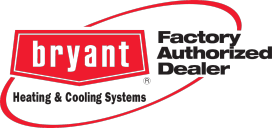
It’s easy for heat and air companies to fall into the trap of using complicated jargon when discussing your HVAC system. It can be difficult for the average homeowner to understand what we’re discussing. However, as a homeowner, it’s important to be able to describe what’s happening with your HVAC system quickly and accurately using the appropriate terms. This can better prepare your HVAC tech when you have an issue and it helps you perform proper maintenance on your system.
With that in mind, here are the essential HVAC terms that’ll help you communicate your needs.
SEER
SEER stands for a Seasonal Energy Efficiency Ratio. This ratio tells you how efficient your air conditioner is. A 13 SEER system is inefficient, while a 21 or 25 SEER system is running at maximum efficiency. You don’t always want to buy the highest SEER air conditioner possible. This can backfire as high-efficiency systems may not produce the jets of cold air that you’re used to. Instead, to conserve energy, the air conditioning system may produce a slow, consistent flow of cool air.
HSPF
HSPF stands for heating season performance factor. While SEER is used for air conditioners, the HSPF is used for heat pumps. One heat pump will have two different ratings: a SEER rating when it is in cooling mode and an HSPF rating when it is in heating mode. A low rating is 8 or lower, while a high rating would be 9 or higher.
Heat Pump
A heat pump is an alternative to a traditional separate air conditioner and furnace HVAC system. The heat pump is your air conditioner and furnace all in one. These units can be more efficient than other methods as they move heat instead of spending energy creating heat. It’s much more efficient to pull heat out of the air and move it to where it’s needed (inside or outside) versus relying on gas to create it. When deciding which method is right for you, discuss the options with your heat and air company.
Geofence
Geofence is a relatively new term when it comes to the HVAC market and is used only in reference to smart thermostats. Some smart thermostats have a geofence – a digital barrier around your property. When you drive through it, the thermostat decreases production to save energy. When you move back through that area and towards the house, the thermostat re-increases production again.
Adaptive Recovery
Adaptive recovery also has to do with smart thermostats. Some smart thermostats with this feature will “learn” how long it takes for the house to reach an ideal temperature. It then starts the system earlier, in order to reach the desired temperature by the time you get home.
Heat Exchanger
You may hear your local heat and air companies refer to a heat exchanger in terms of safety precautions. A leak in your heat exchanger can lead to carbon dioxide and other harmful chemicals entering your home. Heat exchangers are used to transfer heat from one fluid or gas to another fluid or gas without either material touching the other.
Evaporator Coil
An evaporator coil is part of your air conditioning system and absorbs any heat and humidity created in the system. If you notice that your vents are blowing out muggy air or your house feels humid even with the air conditioning running, you could have a problem with your evaporator coil. The coil doesn’t actually look like a circle or slinky. Instead, the evaporator coil is a series of pipes running through the system.
Condenser Coil
A condenser coil also plays a crucial role in your air conditioning unit. Without a condenser coil, your air conditioning unit would be blowing out warm or hot air. This coil removes heat from the pressurized gas refrigerant and expels it out of the unit altogether. If you walk behind your outdoor unit, you may notice warm air blowing out. That’s thanks to your condenser coil.
Supply Vents
Supply vents are called many names, including supply registers, supply grills, and just registers. These types of vents exist in a central air conditioning system that supplies the interior of your house with cool air. Supply vents connect to the ductwork within the walls of your home. In order to tell if a vent is a supply vent, hold a piece of paper in front of it. Does the paper blow towards you or away from you? If it blows towards the interior of your room, it is a supply vent.
Return Vents
Without return vents, supply vents would be useless. Return vents have the crucial function of sucking air out of the interior of your home and moving it back to the central system. These vents remove warming air and return it to be cooled by the central AC system once again. Think of supply and return vents as constantly recycling air.
MERV
MERV stands for Minimum Efficiency Reporting Value and is a term used to denote the overall effectiveness of air filters. A higher MERV rating means the air filter is more restrictive and captures more pollutants. However, tread carefully. While a MERV that is too low will lower your indoor air quality, one that is too high will force your HVAC system to work harder and require more service from heat and air companies.
All heat and air companies have their own personal lingo that they use to discuss HVAC issues with each other and with clients. This glossary is by no means comprehensive. If you’re working with Rod Miller, don’t be afraid to ask questions. We love teaching our clients how to take better care of their HVAC systems! For more HVAC tips, follow along with our blog here.


